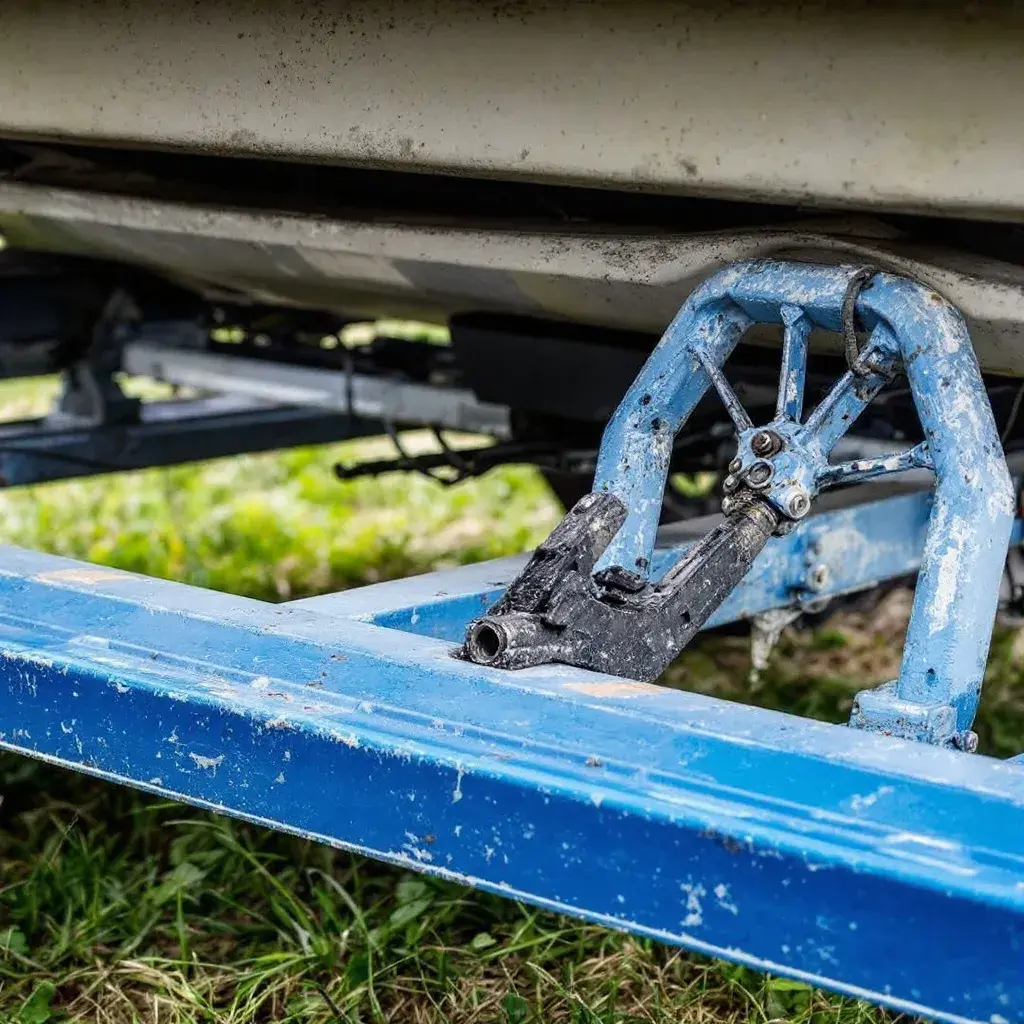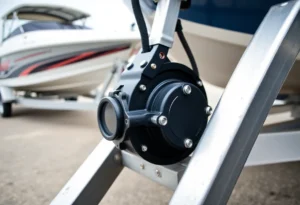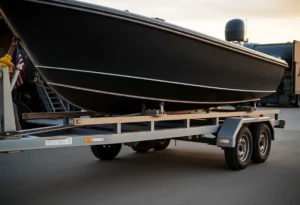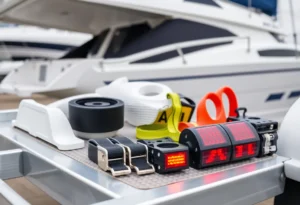Maintaining your boat trailer in top condition is essential for safe and hassle-free towing. Over time, components of any trailer can wear out from exposure to water, road grime, and the general stress of carrying heavy loads. Regular inspection and timely replacement of worn-out parts can help extend the life of your trailer, prevent costly repairs, and keep your boat secure during transport. Here’s a guide to recognizing signs of wear on critical components and practical steps to replace them.
Key Boat Trailer Components Prone to Wear and Tear
- Tires and Wheels
- Signs of Wear: Check for tread wear, cracking, bulging, and uneven wear patterns on the tires. If the tread is worn down or you notice splits in the rubber, it’s time to replace them. Uneven tire wear may indicate issues with alignment or load balance.
- Replacement Steps: Use a lug wrench to remove the wheel’s lug nuts and swap out the worn tire with a replacement that matches your trailer’s specifications. Ensure proper lug nut torque to avoid loose wheels while towing.
- Bearings and Hubs
- Signs of Wear: Bearings and hubs can wear out due to exposure to water and road grime, leading to rust, contamination, or grinding noises while towing. If you notice unusual noise or excessive heat around the wheels after a trip, inspect the bearings and hubs.
- Replacement Steps: Jack up the trailer, remove the wheel, and inspect the bearing for damage. Replace damaged bearings with quality replacements, greasing them thoroughly to ensure smooth rotation. It’s recommended to repack your bearings every 12 months or sooner if frequently submerged in water.
- Brakes
- Signs of Wear: Trailer brakes are essential for safe stopping, especially with heavier boats. Look for signs like squeaking, reduced braking performance, or corrosion around the brake components. Inspect both the disc or drum surfaces and brake pads.
- Replacement Steps: For brake pads, remove the wheel and brake caliper, swap out the old pads for new ones, and reassemble. For disc or drum replacements, disassemble the braking mechanism and replace the worn components with compatible parts for your trailer.
- Bunks and Rollers
- Signs of Wear: Bunks and rollers support the boat’s hull, and signs of wear include cracks, flattening, and deterioration in cushioning material. Bunks may lose shape over time, and rollers may crack or develop flat spots.
- Replacement Steps: For bunks, remove the mounting bolts to detach them from the trailer, and replace them with new ones, ensuring they are securely bolted. For rollers, unfasten the old rollers and swap them out for fresh ones. Check alignment and position to ensure proper boat support.
- Winch and Winch Strap
- Signs of Wear: The winch and winch strap play a critical role in securing your boat during loading and transport. Look for frayed straps, rust on the winch, or any issues with the winch’s handle or ratchet mechanism.
- Replacement Steps: If the winch strap shows wear, detach it and replace it with a new, heavy-duty strap. For the winch itself, unbolt the unit and install a replacement with adequate weight capacity for your boat. Ensure that the winch is securely mounted and the strap is properly wound.
- Trailer Frame and Axle
- Signs of Wear: Regularly inspect the trailer frame and axle for signs of rust, bends, or structural damage. Though resilient, the trailer’s frame can still be vulnerable to damage over time.
- Replacement Steps: If you notice severe damage, replacing a trailer axle or frame components may require specialized tools. Check the alignment and stability after installation to ensure a smooth ride.
Essential Tips for Trailer Maintenance
- Regular Cleaning: After each use, especially if your trailer has been in saltwater, rinse off any grime and salt residue. Saltwater can accelerate the deterioration of parts if not cleaned off.
- Lubrication and Rust Prevention: Grease your bearings regularly and apply a rust inhibitor to metal components exposed to moisture. Lubricating moving parts reduces friction and prolongs their lifespan.
- Routine Inspections: Make it a habit to inspect your trailer after each trip. A quick visual check can catch potential issues early, saving you time and money on repairs.
- Follow Manufacturer Recommendations: Always use parts compatible with your trailer model, as recommended by the manufacturer. This ensures that replacement components fit correctly and function properly.
When to Consult a Professional
Some trailer repairs may require more specialized skills or equipment. If you encounter extensive damage or have questions about parts compatibility, consulting a professional is always a smart choice. They can provide expert guidance and ensure your trailer remains in top condition.
Final Thoughts
Keeping your boat trailer well-maintained with regular inspections and timely replacement of worn-out parts will help ensure safe and smooth towing for years to come. By following these steps, you’ll protect your investment and enjoy peace of mind knowing that your trailer is ready for every adventure.






